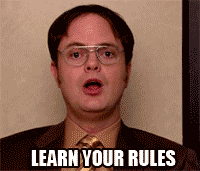How to find your brand voice
The most successful brands - and graduate recruitment agencies - are arguably the ones that have nailed their brand voice. Perfecting this integral part of your startup can be a particularly delicate operation to get right, but once you've spent time developing your voice it will be a key tool that reels in customers and talent.
Why is brand voice so important?
Having a consistent marketing voice across your social channels and website will ensure a better experience for your customer - they will recognise your brand and see the humanity behind the product. A consistent voice also lends a helping hand when it comes to customer service, as there can be a huge difference in consumer reaction when confronted with (A) a response that sounds like a robot, compared with (B) something that sounds like a person genuinely concerned about the issue at hand. Nowadays authenticity counts for a lot, which is reflected in the rise in emphasis that consumers place on peer reviews online and via word of mouth. Take a look at this article in The Guardian states that as much as ‘70% of consumers place peer recommendations above professionally written copy’. So, while you can’t be their actual friend or family member sharing first-hand insights, you can still aim to communicate on their level (the approachable, no-nonsense level) rather than opting for the same corporate monotone we see time and time again.

Voice vs Tone
To begin thinking about your brand voice, you need to differentiate between voice and tone. In simple terms, voice is the overarching way that you speak. Voice does not change – you are your voice and your voice is you. For example, BrighterBox's voice is helpful, informative, informal, and older sibling-esque in our delivery. Tone, on the other hand, does change – all the time in fact. You alter your tone depending on who you're talking to and what the situation is – whether you are chatting to friends in a bar or presenting to a client in a meeting. Be aware of this in your virtual interactions.
break-v5
Personify your startup
To discover and refine your brand voice, you'll need to do some work towards pinpointing your customer. Take the time to sit down with the rest of your company and come up with a few words to describe your business as if it were a person. Describe their personality in a few broad terms, for example 'quirky', 'trustworthy', or 'authoritative', and then break down each trait into smaller chunks to broaden your definition. Once you have these points you can begin to think about how that type of person would come across when communicating. Write a few phrases that you imagine would be regularly used and see if they fit with the characteristics that you began with. If you're having trouble settling on your key descriptors, don’t be afraid to host a focus group made up of friends and family to get their views on how they would (or would like to) perceive your company.

Your opposite and your mannerism
Don’t forget to keep an eye on what your company is NOT as well. For example, Mail Chimp has a thorough guide on their brand voice which gives examples of who they are and who they most definitely are not. So if, for instance, your brand is 'cheeky' you might also want it to be clear that you are never insulting, or if it is 'authoritative' then never stuffy. During this phase of your branding process, you should also decide whether you include humour in your brand voice and what other mannerisms or phrases should be associated with your business – for example, Innocent Drinks employs simplistic language full of colloquialisms and playfulness that matches the energy of a child sugar high on Tangfastics. To note: a humourous brand voice should be handled with care, as even the pros like our beloved Innocent have been burned by a jest-gone-wrong (must we mention the conker milk incident?). The general consensus is usually, 'if it feels forced then leave it out'.
For a business that's already fairly established, then it can be useful to look at the way that consumers talk about your brand online. They're the ones that drive your business, so if they're repeating a particular way of speaking then you might want to think about getting on wavelength. Developing your brand voice is all about communicating with your customers, after all.
break-v5
Brand voice guidelines
Once you feel confident with your brand voice and what it should sound like, you'll need to set it in stone by writing up brand voice guidelines. Be clear and unwavering in your guidelines to make sure that anyone who speaks for your brand always hit the right notes. Have a meeting with your team to explain the process that went into refining your brand voice and use existing content that you think demonstrates it in practice. Include examples of your copy in different contexts and applied to different scenarios so that there is no room for doubt about how to communicate. Once this formula is established among your team, feel free to let them loose on your customers and watch for the results.
 Editor's note: This blog was originally published in 2017 and has since been updated.
Editor's note: This blog was originally published in 2017 and has since been updated.
BrighterBox connects the fastest-growing companies with the brightest graduates.
Graduate Jobs




Add new comment